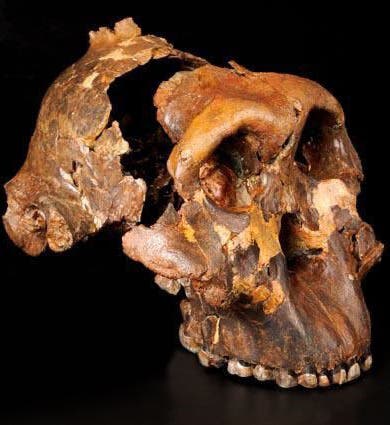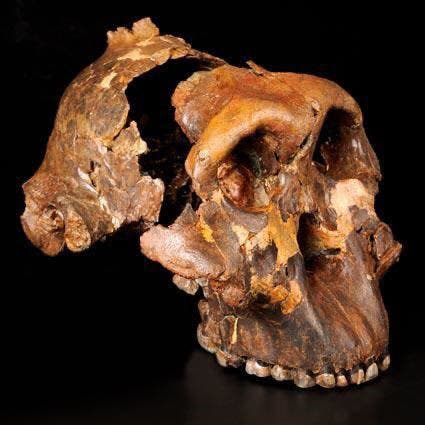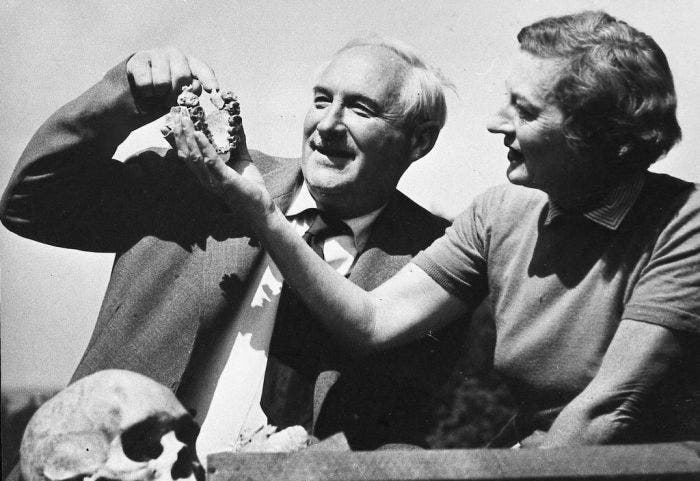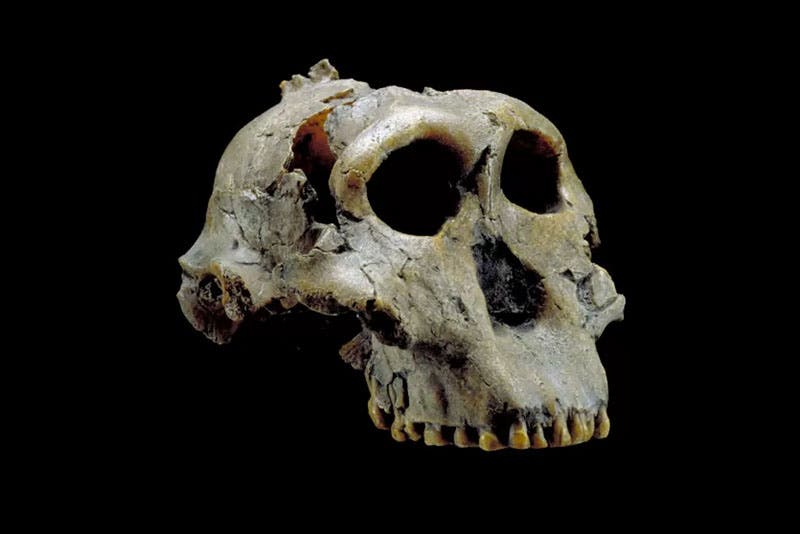Scientist of the Day - Zinj
On the morning of July 17, 1959, Mary Leakey, an English anthropologist, was digging by herself at a site in Olduvai Gorge, Tanzania. She and her husband Louis had been working at Olduvai Gorge for decades, and they had found many primitive tools (Oldowan tools) indicating the presence of human or prehuman ancestors, but direct evidence of such inhabitants – fossil bones – had eluded them. Usually Mary and Louis worked together, but on this morning, Louis was laid up with malaria in the tent, so Mary ventured out on her own. And as it happened, she spied a fragment of skull protruding from the eroded strata. The site was excavated over the course of the next three weeks, and when they had found all the fragments and put them together, they had a fairly complete skull of a pre-human primate, with huge teeth, and a large crest on the top of its skull, like a gorilla (first image). At first, they referred to it affectionately as "Dear Boy," but after Louis published a paper in Nature and gave the specimen its first scientific name, Zinjanthropus boisei, it acquired a new nickname, "Zinj," by which it is still known today. As it was the fifth specimen found at Olduvai, its more formal designation is Olduvai hominid 5, or just OH 5.
Zinj was a significant find for many reasons. It was the first substantial fossil found at Olduvai, which would yield many more in ensuing years. It was initially credited wth being the long-sought toolmaker for the Oldowan tools, but when Homo habilis was found the next year, it began evident that Homo habilis (“handy man”) had made the tools, and Zinj had not. Zinj was instead related to the South African hominid Paranthropus robustus, and indeed it was renamed Paranthropus boisei, although others preferred to include it with the australopithecines as Australopithecus boisei.
Zinj is also important because the site where Zinj was found was the first hominid site in Africa that could be reliably dated. An American named Garniss Curtiss had developed a new system of radiometric dating, called potassium-argon dating, which could be used on volcanic rocks, such as those that layered the area where Zinj was excavated (fourth image). Louis invited Curtiss to do his stuff, and in 1960, Curtiss announced that the rock where Zinj was found was laid down 1.75 million years ago. At last, hominid evolution in Africa had one date marker, and it would soon have many more.
And finally, the discovery of Zinj was significant because it came to the notice of Melville Grosvenor, editor of National Geographic magazine and president of the National Geographic Society. Grosvenor came to know and like the Leakeys, secured sponsorship for their subsequent digs, and plastered their faces and their finds all over the pages and covers of National Geographic. Before 1959, anthropology was almost an invisible science; after 1960, it was the darling of the public, and Louis Leakey was one of the most recognized scientists in the world. Ah, the power of the press! Mary, alas, would have to wait until Louis passed away (in 1972) for the limelight to move to her corner. We shall have more to say about Mary Leakey in a future post.
Zinj was kept for many years at the National Museum of Kenya, and is now housed at the National Museum and House of Culture, Dar es Salaam, Tanzania. We show the original in the Tanzania museum (first image), and one of the many replicas scattered around the museums of the world, this one in the National Museum of Natural History at the Smithsonian Institution (fifth image).
William B. Ashworth, Jr., Consultant for the History of Science, Linda Hall Library and Associate Professor emeritus, Department of History, University of Missouri-Kansas City. Comments or corrections are welcome; please direct to ashworthw@umkc.edu.









![Using an astrolabe to measure the depth of a well, woodcut in Elucidatio fabricae vsusq[ue] astrolabii, by Johannes Stöffler, 1513 (Linda Hall Library)](https://assets-us-01.kc-usercontent.com:443/9dd25524-761a-000d-d79f-86a5086d4774/a998eb50-55d2-4a88-ace2-a50aa5fa86e7/Stoffler%201.jpg?w=210&h=210&auto=format&fit=crop)

